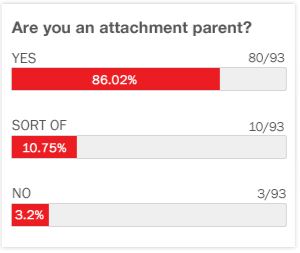Symptoms & outcomes for intrauterine growth restriction
Comment
OBGYN Suzanne Gilberg-Lenz, MD, explains what intrauterine growth restriction is during pregnancy, what the causes are, and the symptoms and treatments for intrauterine growth restriction
255
Transcription:
Growth restrictions refers to a baby that's suspected to be less than 10% of weight that would be expected for that gestational age. It can be a baby that's simply small and on the lower part of the growth curve or baby that should have been bigger but for some reason is not growing appropriately. There are different things that can cause growth restriction. They can be caused by both issues with the mother and with the baby. As far as the mother is concerned, smoking can cause growth restriction, malnutrition can cause growth restriction, Type 1 diabetes, hypertension and other maternal conditions. There can be reasons with the placenta that the baby is not growing appropriately. Perhaps the cord isn't inserted in the center. It's inserted on the side. Or, there's multiple pregnancies and the babies are taking nutrients from each other. Or, for instance, the placenta is covering the cervix and the baby is not able to get as much nutrition as it might be ideal. There can also be reasons that the baby contributes to growth restriction, for instance, the chromosomal abnormality. The way we try to assess for growth retardation or intrauterine growth restriction is that, at every visit, the woman's fundal height is measured. A tape measure is placed from the super pubic bone to the top or the fundus of the uterus. And, we expect the woman's gestational age to match up approximately within 3 centimeters either way with the height of the uterus. If it's off again by that 3 centimeters and maybe an indication that we need to look more closely in to reasons why the height of the uterus might not be as expected and an ultrasound would be done. Growth restriction can either be symmetric where all the parts of the baby are not growing as one would expect together, or asymmetric where certain parts of the baby are growing appropriately and perhaps the abdominal circumference is not growing as appropriately as the other parts. Infections can also be a cause of intrauterine growth restriction. And, once we suspect that the baby's growth is restricted, we need to look for a cause of the growth restriction, the baby, the mother, the placenta, infection, and we need to monitor the baby a lot more closely with Dopplers, listening to the baby's fetal heart rate tracing, with uterine artery Dopplers to look at the flow of blood to the placenta, and with serial ultrasounds to make sure the baby is continuing to grow. At some point, if the baby is not growing appropriately, it may be necessary to deliver the baby early. We may give the mother steroids to help the baby's lung maturity that it's going to be delivered premature, and we may elect to have the mother undergo an induction or even a C-section to deliver the baby for the baby's safety if it seems that the risk of staying inside the uterus where the baby is not growing or worst with the risk of prematurity once the baby is outside of the uterus. The uterus is supposed to be a very wonderful safe home for the baby. But sometimes, because of baby or maternal conditions, it no longer is and the baby needs to be delivered if it's not able to grow inside and it would grow better outside.
OBGYN Suzanne Gilberg-Lenz, MD, explains what intrauterine growth restriction is during pregnancy, what the causes are, and the symptoms and treatments for intrauterine growth restriction
Related Videos
Transcript
Expert Bio
More from Expert
Lauren D. Hyman, MDObstetrician Gynecologist
Dr. Lauren Hyman is a board-certified obstetrician gynecologist. After receiving her ScB from Brown University and her medical degree from Yale University, Dr. Hyman returned to Southern California where she has been in private practice in the West Hills area for fifteen years. She can be seen weekly on Hallmark Channelʼs Home and Family Pregnancy Series and is a contributing writer on mom.me. She lives with her husband and two children in Los Angeles.




 GET ACCESS TO ALL PREMIUM CONTENT WITH NO ADS FOR $4.99/MONTH
GET ACCESS TO ALL PREMIUM CONTENT WITH NO ADS FOR $4.99/MONTH




Login or Register to view and post comments